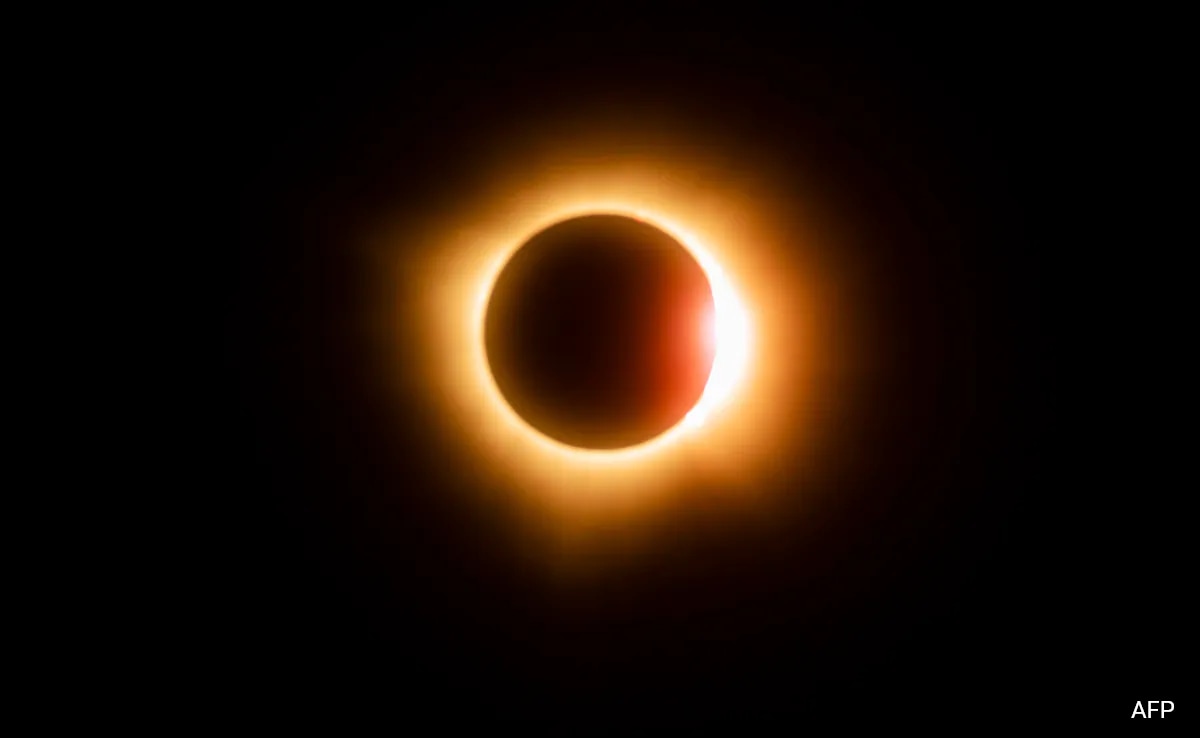
Solar flares can last for hours or just minutes.
Millions of people in the United States, Canada and Mexico looked up to the sky in awe on Monday to watch a rare total solar eclipse. The path of a total solar eclipse, a small area where the moon completely blocks the sun, passed through cities and sent America into a frenzy. Many people also reported spotting solar flares during a total solar eclipse.
Solar flares dance behind the moon
📸 It’s my dad’s pic.twitter.com/hBR9ypsztJ
— jexi 𑁍 (@boricuajexi) April 9, 2024
Today’s total solar eclipse from Houlton, Maine! This time-lapse (mastered in HDR) captures the passage from Second Contact (C2) to Totality to Third Contact (C3) in just over 3 minutes! Can you see the Sun’s corona and significant solar flare activity?
. pic.twitter.com/x3hyZ4upoV– 𝕏 Ahmed Al Said(n) (@nourefidel) April 9, 2024
On Monday, the sun is expected to reach “solar maximum,” or peak activity, in its 11-year solar cycle. During this period, the sun produced more solar flares and coronal mass ejections, which are giant bubbles of plasma containing magnetic field lines, USA Today reported. Weather photographer John White posted some photos he claimed captured two solar flares before the total solar eclipse. “Never before has such a prominent solar flare been seen. Apparently you could fit hundreds of Earths into it!” he wrote.
According to the European Space Agency, a solar flare is a massive explosion on the sun when energy trapped in “twisted” magnetic fields (usually found above sunspots) is suddenly released. They can heat materials to millions of degrees in minutes, creating bursts of radiation including radio waves, X-rays and gamma rays.
Depending on its intensity, a solar flare can last for hours or just minutes. According to NASA’s classification system, solar flares are divided into Class B (the lowest) and Class X (the largest), which was observed on New Year’s Eve last year.
NASA explains that a solar flare is an intense release of energy that can affect radio communications, power grids and navigation signals and pose risks to spacecraft and astronauts. According to the space agency, the largest solar flare ever observed occurred on April 2, 2001. According to observations from the Solar and Heliospheric Observatory, this flare was more powerful than the one that occurred on March 6, 1989, causing disruptions to the Canadian power system. Observatory satellite.
Follow us on Google news ,Twitter , and Join Whatsapp Group of thelocalreport.in













